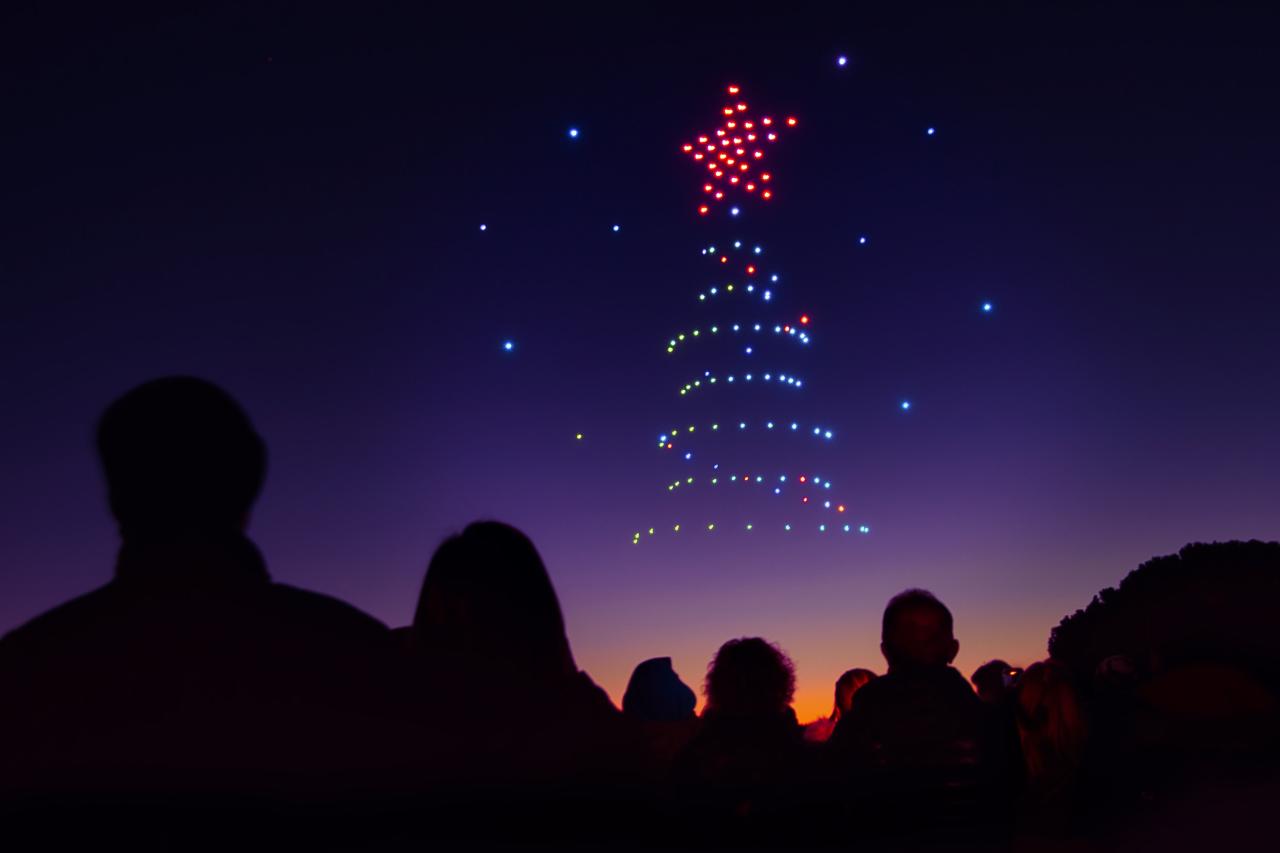Florida drone accidents are on the rise, prompting concerns about safety, regulations, and environmental impact. This analysis delves into the various causes of these incidents, from pilot error and mechanical malfunctions to weather conditions and wildlife interactions. We will examine the legal landscape surrounding drone operation in Florida, comparing state regulations with those of other similar regions. Further, we explore the potential consequences of drone accidents on Florida’s unique ecosystem and discuss preventative measures, including technological advancements and improved public awareness campaigns.
Recent news reports detail a concerning Florida drone accident, highlighting the potential risks associated with unmanned aerial vehicles. This incident underscores the broader issue of safety protocols in drone operation, a concern also raised by a recent drone show accident which involved a malfunctioning swarm. Understanding the causes of such incidents, whether in Florida or at large-scale drone shows, is crucial for improving safety regulations and preventing future accidents.
Understanding the frequency and severity of these accidents is crucial for developing effective safety protocols and minimizing future incidents. This examination will provide a comprehensive overview of the challenges and solutions related to drone safety in the Sunshine State, offering insights into how to mitigate risks and ensure responsible drone operation.
Florida Drone Accidents: A Comprehensive Overview

Florida, with its vibrant tourism industry and diverse ecosystems, experiences a significant number of drone-related incidents annually. Understanding the causes, consequences, and preventative measures surrounding these accidents is crucial for ensuring both public safety and environmental protection. This article delves into the various aspects of Florida drone accidents, examining their types, legal implications, ecological impact, and safety protocols.
Types of Florida Drone Accidents and Their Causes

Drone accidents in Florida stem from a variety of factors, broadly categorized as pilot error, mechanical failure, weather conditions, and wildlife interference. Data on the precise frequency of each category is limited due to inconsistent reporting, but anecdotal evidence and news reports suggest a significant portion is attributable to pilot error.
Pilot error encompasses issues such as improper pre-flight checks, inadequate training, loss of situational awareness, and disregard for regulations. Mechanical failures, including malfunctioning motors, propellers, or GPS systems, also contribute significantly. Florida’s unpredictable weather, characterized by sudden thunderstorms, high winds, and lightning strikes, poses a substantial risk. Finally, wildlife interference, particularly birds colliding with drones, can lead to accidents.
| Accident Type | Cause | Severity | Estimated Damage |
|---|---|---|---|
| Collision with Object | Pilot Error (Loss of Control) | Moderate | $500 – $2,000 (Drone Repair/Replacement) |
| System Malfunction | Mechanical Failure (GPS Failure) | High | $2,000 – $10,000 (Drone, Property Damage) |
| Weather-Related Crash | High Winds | High | $1,000 – $5,000 (Drone, Potential Property Damage) |
| Wildlife Collision | Bird Strike | Low to Moderate | $200 – $1,000 (Drone Repair) |
Legal and Regulatory Aspects of Drone Operation in Florida
Florida, like other states, has specific regulations governing drone operation. These regulations aim to prevent accidents and establish liability frameworks. The Federal Aviation Administration (FAA) regulations apply nationwide, but Florida may have additional local ordinances. Pilots must register their drones with the FAA and adhere to airspace restrictions, including those around airports and sensitive areas. Violations can result in significant fines and even criminal charges depending on the severity of the incident and any resulting damage or injury.
Civil lawsuits are possible if a drone accident causes property damage or personal injury. Liability often rests with the drone operator, emphasizing the importance of insurance and responsible flying practices. Compared to other states with similar climates and tourism, Florida’s drone regulations are generally consistent, focusing on safety and responsible operation.
Impact of Drone Accidents on Florida’s Ecosystem, Florida drone accident
Florida’s unique ecosystems, including its coastal areas, wetlands, and wildlife habitats, are particularly vulnerable to the impacts of drone accidents. Accidents can result in direct damage to wildlife through collisions or habitat disruption. Drones crashing into sensitive areas like coral reefs can cause physical damage, impacting marine life. Accidents involving drones carrying hazardous materials present an even greater risk, leading to potential environmental contamination.
- Habitat destruction and disruption of wildlife breeding grounds.
- Water pollution from battery acid or other drone components.
- Long-term damage to sensitive ecosystems, requiring extensive restoration efforts.
- Potential harm to endangered species through direct impact or habitat disturbance.
Safety Measures and Prevention Strategies for Drone Operation in Florida

Safe drone operation in Florida requires careful planning and adherence to best practices. Pre-flight checks should include thorough inspection of the drone, batteries, and GPS system. In-flight procedures should emphasize maintaining visual line of sight, avoiding congested areas, and being aware of weather conditions. Post-flight procedures include a careful inspection for damage and secure storage of the drone and its components.
Regular maintenance and inspections are crucial for preventing mechanical failures. Pilots should be aware of Florida’s unique weather challenges and avoid flying during storms, high winds, or periods of low visibility. Understanding and respecting airspace restrictions is paramount.
Insurance and Liability Coverage for Drone Operators

Drone operators in Florida should obtain adequate liability insurance to cover potential damages resulting from accidents. Several insurance providers offer policies specifically designed for drone operators, varying in coverage amounts and premiums. The choice of insurance policy depends on the type of drone operation, frequency of flights, and the level of risk involved.
Recent news reports highlight the increasing frequency of Florida drone accidents, underscoring the need for improved safety regulations and pilot training. However, the potential benefits of drone technology are undeniable, as showcased by the spectacular displays at events like the florida drone show , which demonstrates the impressive capabilities of these devices when operated responsibly. Ultimately, preventing future Florida drone accidents requires a balance between innovation and stringent safety measures.
Comprehensive liability coverage is essential to protect against financial losses resulting from property damage, personal injury, or environmental harm caused by a drone accident. The cost of repairing or replacing a drone is often minimal compared to the potential liability for damages caused by an accident.
Public Awareness and Education Initiatives
Raising public awareness about drone safety is critical in preventing accidents. Effective strategies include public service announcements (PSAs) disseminated through various media channels, educational programs targeting drone enthusiasts, and community outreach initiatives.
A sample PSA might feature visually compelling graphics of safe drone operation practices, contrasting them with examples of unsafe behavior. The messaging should be clear, concise, and emphasize the importance of responsible drone use. Educational programs can provide hands-on training, covering regulations, safety protocols, and emergency procedures.
Technological Advancements Enhancing Drone Safety
Technological advancements are continuously improving drone safety. Autonomous emergency landing systems can help prevent crashes in case of system malfunctions. Obstacle avoidance systems, using sensors and AI, enhance situational awareness and prevent collisions. These advancements significantly reduce the frequency and severity of accidents.
| Technology | Effectiveness | Limitations |
|---|---|---|
| Autonomous Emergency Landing System | High – prevents crashes in many situations | Relies on battery power; may not function perfectly in all conditions |
| Obstacle Avoidance System | Moderate to High – reduces collision risk | Sensor range limitations; can be affected by weather or environmental factors |
| GPS-Based Geofencing | High – prevents flight in restricted areas | Reliance on GPS signal; can be spoofed or disrupted |
In conclusion, addressing the issue of Florida drone accidents requires a multi-faceted approach. Strengthening regulations, enhancing pilot training, promoting technological advancements in drone safety, and raising public awareness are all essential steps. By understanding the diverse factors contributing to these accidents—from human error to environmental challenges—we can work towards creating a safer airspace and protecting Florida’s unique environment.
Continuous monitoring and adaptation of safety measures will be crucial in mitigating the risks associated with the increasing popularity of drone technology in the state.
FAQ: Florida Drone Accident
What are the most common causes of drone accidents in Florida involving injury?
Recent reports of a Florida drone accident highlight the importance of safe drone operation. The incident underscores the need for responsible piloting practices, a stark contrast to the impressive displays seen at a professional Florida drone show , where safety protocols are rigorously enforced. Ultimately, preventing future Florida drone accidents relies on education and adherence to regulations.
Pilot error, such as loss of control or improper flight planning, often leads to accidents causing injury. Mechanical failure and unforeseen weather events are also significant contributors.
Can I fly a drone anywhere in Florida?
No. Florida, like other states, has designated no-fly zones around airports, sensitive infrastructure, and wildlife areas. Check FAA regulations and local ordinances before flying.
What type of insurance is recommended for drone operators in Florida?
Liability insurance is crucial to cover potential damages or injuries caused by your drone. The amount of coverage should be tailored to the risk level of your drone operations.
Are there specific penalties for violating Florida drone laws?
Yes. Penalties can range from fines to legal action, depending on the severity of the violation. Consult Florida’s drone regulations for specific details.
